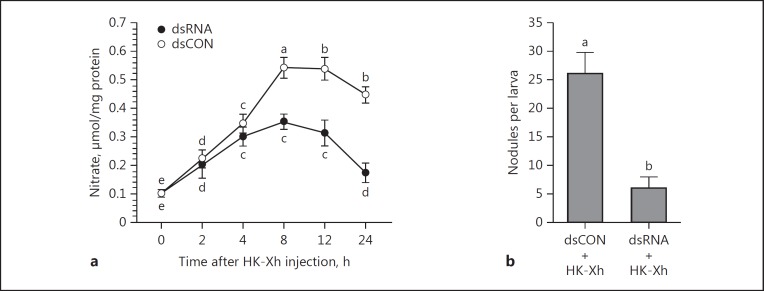Fig. 5.
dsSeNOS treatments led to reductions in NO concentrations and hemocyte nodule formation in S. exigua. a dsSeNOS injections suppressed bacterial-stimulated NO production in L5 fat body. One microliter (2 μg) of dsRNA was injected into each larva. At 48 h post-injection (PI), heat-killed X. hominickii (HK-Xh; 1 × 105 bacterial cells per larva) were injected into the larvae. At the indicated times PI, fat bodies were isolated and processed for nitrate determinations. The data points represent mean NO concentrations and the error bars represent 1 SD. Data points annotated with the same lower-case letters are not significantly different at type I error = 0.05 (LSD test). b dsSeNOS suppressed bacterial-stimulated nodule formation. dsRNA was injected into L5 larvae, and at 48 h PI, HK-Xh (1 × 105 bacterial cells per larva) were injected into the treated larvae. For dsRNA control (dsCON), dsRNA specific to a viral gene, CpBV-ORF302[34], was injected into the larvae (the same amount of dsSeNOS). At 8 h PI, nodules were counted by dissection. Each treatment included 5 biologically independent replicates. Histogram bars represent mean numbers of nodules/larva and the error bars represent 1 SD. Different letters above the SD bars indicate significant difference among means at type I error = 0.05 (LSD test).

